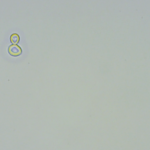
Cryptococcus neoformans
5 Μαρτίου, 2025Neonatal Mucormycosis: A Rare but Highly Lethal Fungal Infection in Term and Preterm Newborns—A 20-Year Systematic Review
15 Απριλίου, 2025Abstract
Ocular surface disease (OSD) encompasses a variety of additional factors in the natural history of infectious keratitis like disruption of the normal tear film, altered ocular microbiome, adnexal inflammation, de-epithelization of the cornea due to anatomical factors like trichiasis, lid margin keratinization, presence of limbal stem cell deficiency, and other lid related problems. These cases need special attention with respect to lower threshold for inpatient admission and care along with examination and careful corneal scraping to avoid any perforation. The preferable practice patterns in these include documenting epithelial defects using fluorescein stain in the presence of cobalt blue filter, use of preservative-free monotherapy drops in mild to moderate corneal ulcers, quantification of corneal thinning and depth of infiltrate using anterior segment optical coherence tomography, and early tapering of epithelia-toxic drugs with judicious addition of lubricants and steroids. The changes in surgical management involve adopting a lower threshold for procedures that can enhance healing, such as amniotic membrane grafting, electrolysis of trichiasis, and punctal occlusion for severe dry eye disease. Conversely, a higher threshold for therapeutic keratoplasty is preferable as postoperative healing is a major challenge in eyes with OSD. A closer follow-up is vital as healing is slower and risk of reinfection is higher. The long-term management of corneal opacity in OSD is also complex as first-stage ocular surface stabilization is essential prior to keratoplasty. (read more)
Bari, Aafreen; Nandyala, Sushma1; Balakrishnan, Jyothi; Agarwal, Tushar; Dada, Tanuj; Saxena, Rohit; Sharma, Namrata. Indian Journal of Ophthalmology 73(4):p 508-515, April 2025. | DOI: 10.4103/IJO.IJO_1917_24
